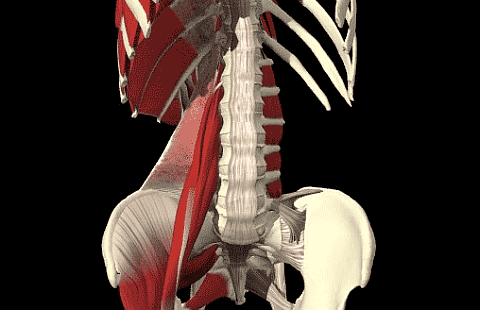Are your hips causing your injury?

How often have you been injured? Have you ever added all the time lost to an injury? Chances are you haven’t – in some cases that time could have kept you from a PB or reaching the podium in your last race.
Overuse injuries are very common but most athletes fail to pick up the early warning signs. It’s the little things that need to be addressed before you suddenly get to a point where the doctor or physio tells you, “sorry but you won’t be able to train for 2 weeks!”
That’s when the penny drops and you realize the seriousness of the situation.
Injuries don’t just happen suddenly (unless you have a crash – dread the thought). A slight deviation in motion can, over time, lead to a big problem. You may be happily running along for weeks or months without noticing, but the injury is slowly developing. When it does finally hit, often the underlying problem goes undetected. After all, why would you suspect your foot to be the cause of your back pain?
Although there are many possible areas of abnormal biomechanics, a common one, and sometimes overlooked, is the pelvis (hips). Abnormal pelvic motion during running can put undue strain on a variety of structures and lead to overuse problems.
However, before you begin cursing your pelvis, understand that sometimes abnormal pelvic motion is merely a result of a problem elsewhere. Looking at, and correcting, abnormal pelvic motion can help you discover these hidden problems.
To appreciate the abnormalities that may occur in running, picture a box around the pelvis. The two most common situations are:
1. the pelvis is tilted forward (anterior tilt); picture slightly rotating the box forward
2. one side of the pelvis is lower than the other (lateral tilt); imagine slightly tipping the box to one side, right or left.
Each of these abnormalities has its own specific range of problems and sometimes both can occur. So how do you find out if you’re experiencing abnormal pelvic biomechanics?
There are several clues to explore.
Look at the wear on your shoes. If it is uneven, then you know that one leg is doing something different. This may not involve the pelvis but it is a consideration. Try this simple test. Perform a one leg squat, first with one leg and then the other. Go down to about a 90-degree bend in the knee. Watch yourself in the mirror. If balance is harder on one side, or you find that one side seems weaker, tight, painful, or less coordinated, then you need to look more closely at pelvic biomechanics.
If you have experienced any of the overuse injuries listed below, then you should definitely consider pelvic biomechanics. To discover what is happening specifically requires outside assistance. A biomechanics specialist or experienced running coach can look at your form and give you feedback. Because some abnormalities are very subtle, a video of you running is often quite helpful. Once the abnormality is identified, then hunt for the associated tight or weak muscles, and/or related problems (e.g. overpronation, leg length discrepancy, etc…) and fix it.
Direction………………..Associated injuries………Potential cures
Anterior tilt………… 1.) Lower back pain
………………………………………………………..……..A) Abdominal muscle strengthening
……………………………..2.) hamstring strain
……………………………………………………………….B) Stretching and strengthening of gluteal muscles, hip
……………………………………………………………….external rotators, hip flexors, and hamstrings
……………………………..3.) patellar tendinitis
……………………………………………………………….C) Balance and retraining (e.g. one-legged squats)
……………………………..4.) patellofemoral syndrome
And if the angle of gait is widened,
lower leg problems such as shin pain.
Lateral tilt……………..1.) iliotibial band friction syndrome
.………………………………………………………………A) Look for leg length difference, overpronation in one
……………………………………………………………….foot, etc. and consider orthotics to correct
……………………………..2.) lower back pain — usually one side
……………………………………………………………….B) Stretching and strengthening of hip adductors,
……………………………………………………………….abductors, extensors, and ext. rotator muscles
……………………………..3.) adductor (groin) strains
……………………………………………………………….C) Balance and retraining (e.g. one-legged squats)
……………………………..4) lateral hip pain
Enjoy your training!
Jono Rumbelow, Certified ironguides Method Coach – South Africa
www.ironguides.net
* * * Your best is our business.™ * * *










